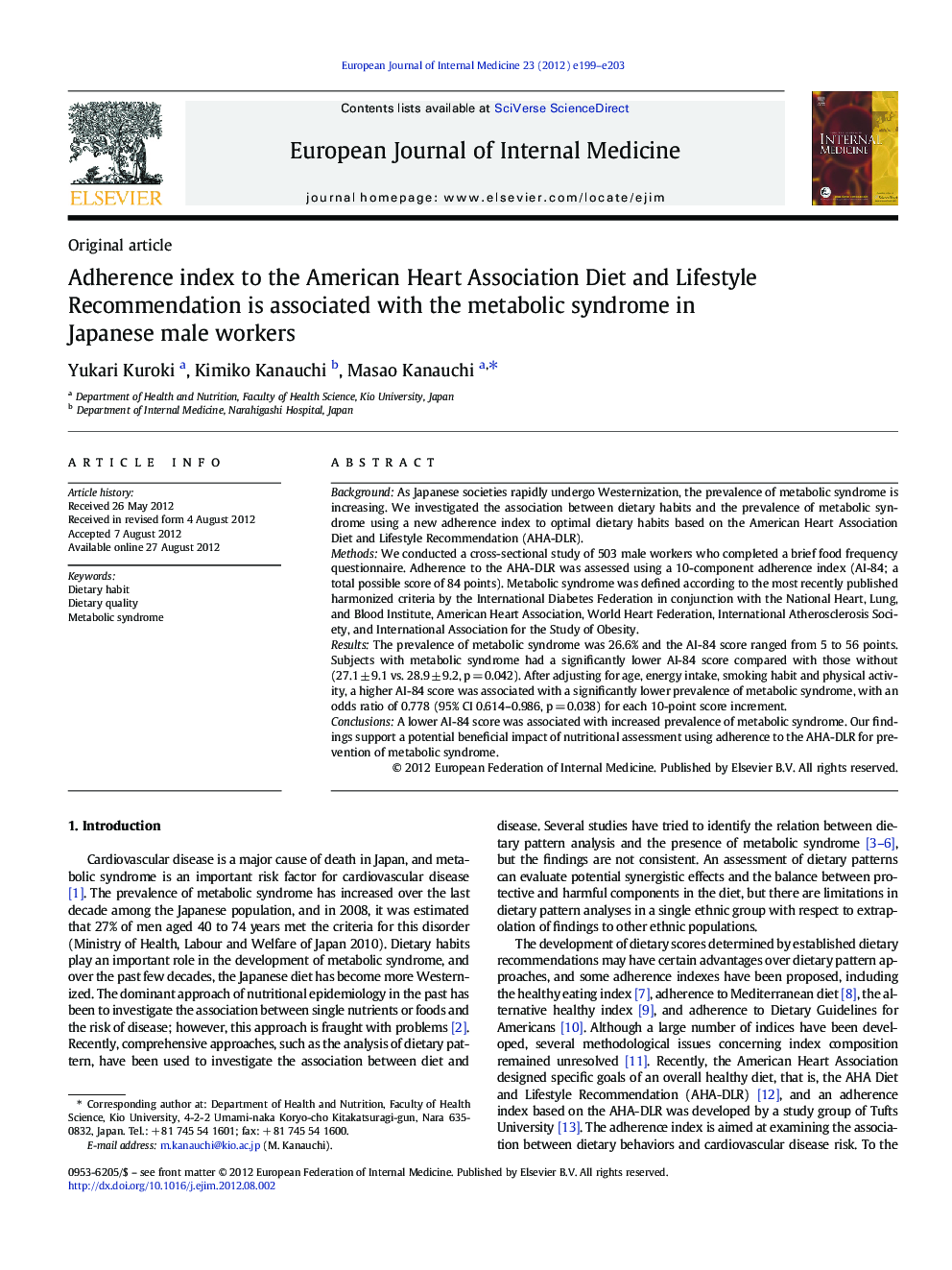| Article ID | Journal | Published Year | Pages | File Type |
|---|---|---|---|---|
| 3467366 | European Journal of Internal Medicine | 2012 | 5 Pages |
BackgroundAs Japanese societies rapidly undergo Westernization, the prevalence of metabolic syndrome is increasing. We investigated the association between dietary habits and the prevalence of metabolic syndrome using a new adherence index to optimal dietary habits based on the American Heart Association Diet and Lifestyle Recommendation (AHA-DLR).MethodsWe conducted a cross-sectional study of 503 male workers who completed a brief food frequency questionnaire. Adherence to the AHA-DLR was assessed using a 10-component adherence index (AI-84; a total possible score of 84 points). Metabolic syndrome was defined according to the most recently published harmonized criteria by the International Diabetes Federation in conjunction with the National Heart, Lung, and Blood Institute, American Heart Association, World Heart Federation, International Atherosclerosis Society, and International Association for the Study of Obesity.ResultsThe prevalence of metabolic syndrome was 26.6% and the AI-84 score ranged from 5 to 56 points. Subjects with metabolic syndrome had a significantly lower AI-84 score compared with those without (27.1 ± 9.1 vs. 28.9 ± 9.2, p = 0.042). After adjusting for age, energy intake, smoking habit and physical activity, a higher AI-84 score was associated with a significantly lower prevalence of metabolic syndrome, with an odds ratio of 0.778 (95% CI 0.614–0.986, p = 0.038) for each 10-point score increment.ConclusionsA lower AI-84 score was associated with increased prevalence of metabolic syndrome. Our findings support a potential beneficial impact of nutritional assessment using adherence to the AHA-DLR for prevention of metabolic syndrome.
